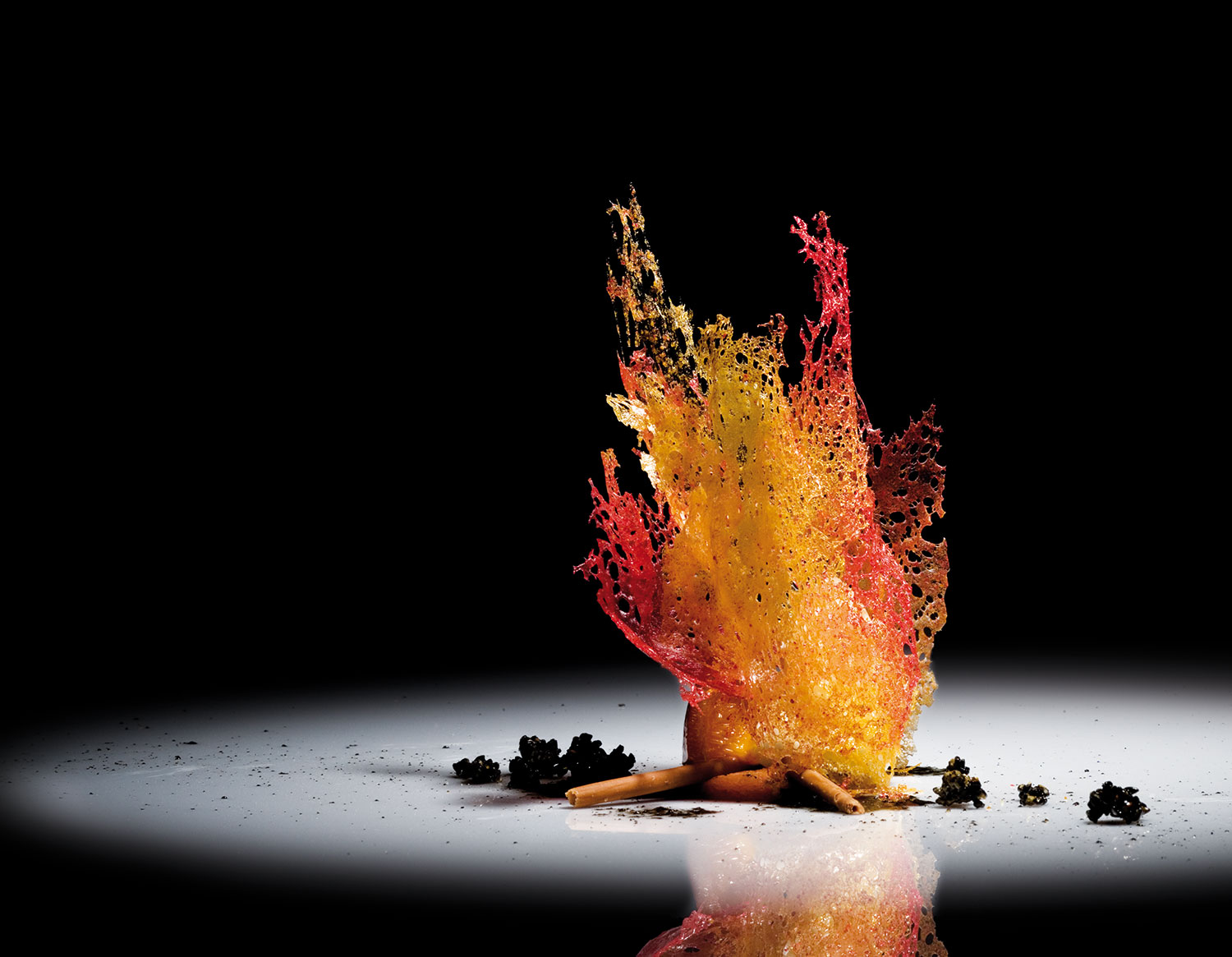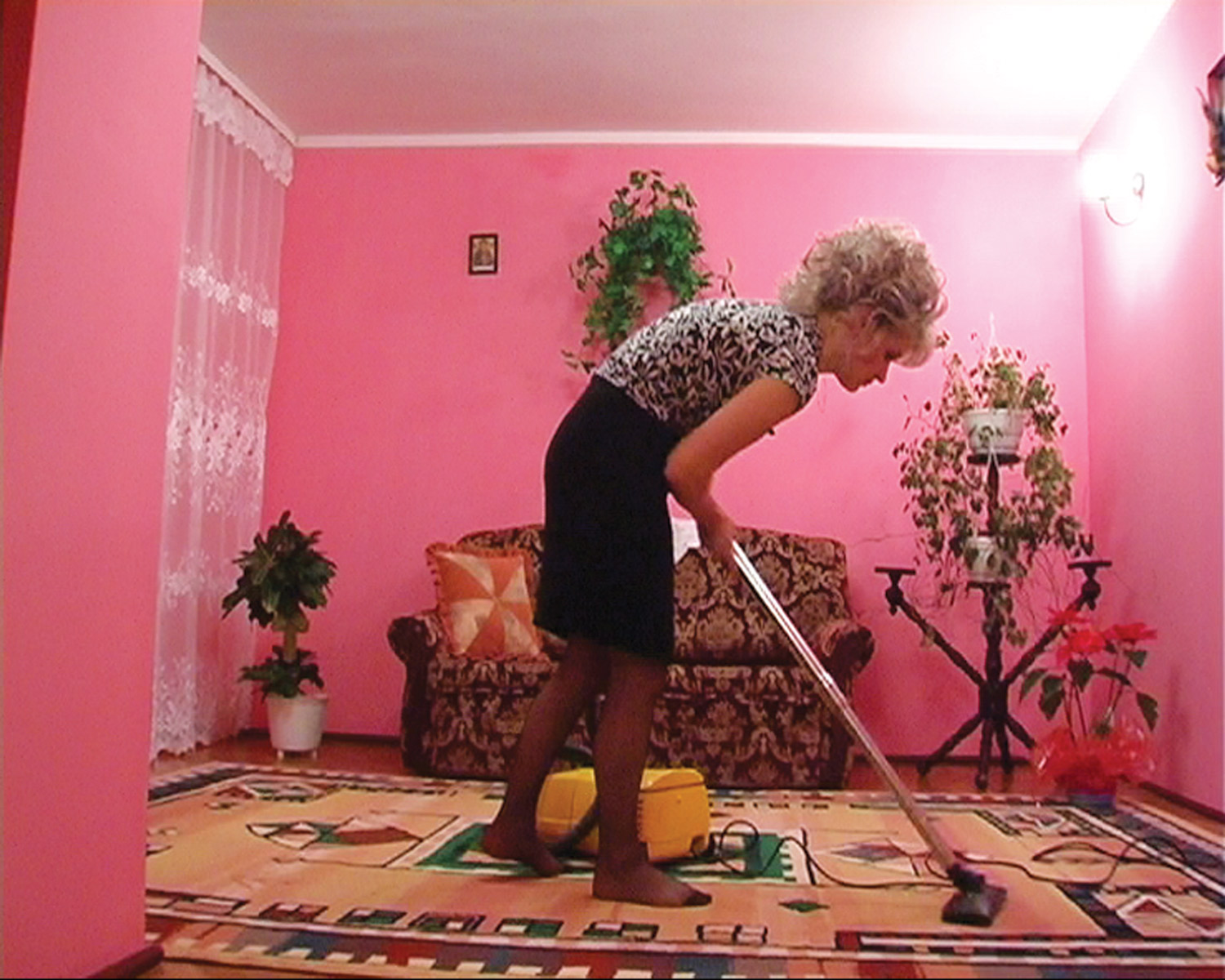
Robert Stasinski: In 1958 the BBC first aired the TV series Monitor, which focused on the arts and culture. You have used this and other TV productions to claim that the idea of the artist presented here is problematic. Do you feel that this particular series has had much of an impact on the public and on the art world’s self image?
Olivia Plender: Monitor is interesting as it was the first arts and culture series on British television and so, to an extent, it set the mold as to how these subjects are represented within the British media. Initially, I was attracted to the program because I had been making a comic book (The Masterpiece, 2002 onwards) which was quite a simple critique of the Romantic stereotypes attached to the idea of the (usually male) artist genius. The first piece I made on Monitor was an interview with British filmmaker Ken Russell [Ken Russell in Conversation With Olivia Plender, 2005-07], about the biographical movies he made for the series on artists, writers and composers. Monitor did have an impact on how the British public perceived the arts, I think, because it had very high viewing figures, which is inconceivable today, as something so overtly high culture would be unlikely to be aired at prime time on British TV. But when it comes to a long-running series like Monitor it’s not as simple as saying that the representation of artists was problematic, as some of the output was quite experimental.
The episode that I reconstructed in a performance piece for the Tate Triennial 2006 (titled Monitor, 2006) is conventional in structure. It’s a documentary called Private View directed by John Schlesinger, based on interviews with four young artists living in London in 1960. They express some very naïve Romantic attitudes, which are woven into a coherent story by an authoritative male narrator. In later Monitor programs — such as Pop Goes the Easel directed by Ken Russell, about the emerging Pop artists at the Royal College of Art — the artist subjects were clearly engaged with the media and the process of constructing their own public image in a complex way, which is more common today.
RS: Linda Nochlin’s 1971 essay on why there haven’t been any great female artists is so manifestly illustrious that it almost scares me. After re-reading it, it strikes me that the connections with the critique of the genius artist goes hand in hand with a feminist outlook on art history.
Nochlin debunks the age-old notion that art is a translation of personal life into visual terms, and it seems you follow in that critique.

OP: All of my work is informed by feminism, so with the episode of Monitor that I reconstructed there are many things to react to. The gender but also class differences between the characters are very apparent. In my version I used actors to recreate the sound, whilst the original images are replaced by stills of the London locations as they appear today. That the working class areas formerly inhabited by these artists are now populated by millionaires highlights how linked the fantasy of Bohemia is with gentrification processes. Meanwhile the narration reflects the paternalistic ethos of the BBC and the remit to “inform, educate and entertain” as it was established by the BBC’s first director general John Reith in the ’20s. The real narrator was Monitor’s producer Huw Wheldon who wanted TV to make “the popular good and the good popular.” Within this statement there is clearly no interrogation of what these two terms mean. This is obviously problematic by contemporary standards as it implies a very limited and privileged group of usually white, middle-class males dictating what culture is for the rest of the population.
Within the installation that I made in 2007 (Information, Education, Entertainment at Marabouparken Annex, Stockholm), I wanted to discuss these issues in relation to the increasing commodification of knowledge, as there are obvious parallels between the history and role of an institution like the BBC and that of the contemporary museum. Though the old style of broadcasting has been overthrown, what has replaced it is equally problematic as it has none of the idealism of the early BBC, which (in a flawed way) at least aimed for a ‘common culture.’ Public service broadcasting looks set to collapse under the weight of the accusation of elitism, to be replaced by narrow casting. I see this as a re-compartmentalization of viewers according to class, gender, race, etc. that will ultimately restrict access to education. It is an example of the misuse of terms like “choice” and “freedom” to facilitate erosion of the public sphere in line with neo-liberal agendas.
RS: As a contemporary artist you are not alone in using Romantic history and philosophy in your work, which leads up to another part of your sphere of interest. I know you are very interested in the Modern Spiritualist movement. Brief me on how this fascination came about.
OP: Spiritualism was initially interesting to me as another expression of the post-enlightenment crisis in religion, of which the Romantic movement was also a product and a response to the newly individualised industrial society.
The Modern Spiritualist movement started in New York State in 1848 and is based on the belief that it is possible to speak to the dead, a process which they termed the “new science of spirit communication.” At the start, Modern Spiritualism was essentially a social and political movement attempting, through a religious framework, to propose an alternative way of organizing society along co-operative lines. In the 19th century, Spiritualism became very tied up with radical political causes in America such as the anti-slavery movement and the campaign for women’s suffrage, and subsequently became popular amongst working class communities in industrial towns in northern Britain.
Mediumship could be a way of having a public voice without being seen to transgress too many social boundaries, and so it was not uncommon for female mediums to give speeches on the topic of votes for women, in the guise of channeling a dead male thinker. Spiritualists saw what they were doing as an alternative system of knowledge production and education, which for them was necessary as they were mainly auto-didacts. In the US there were even attempts to establish Spiritualist communes where free love was practiced, which is of course very reminiscent of the ’60s. In the graphic novel that I recently wrote on the movement titled A Stellar Key to the Summerland and the performances and installations that I have made about it, this is a parallel that I have tried to make explicit.
The Modern Spiritualists are part of the pre-history of the New Age movement, which today seems to promote an extreme form of individualism and a version of the American dream. The flip side of this belief is that poverty and illness are seen to have nothing to do with structural problems such as lack of educational opportunities, or that the financial system of your country may have just collapsed, but rather result from lack of self belief and are therefore your own fault.

RS: It seems as if your practice of editing, writing and practice-based research all float together, and I wonder how you think these leaps (of faith) affect your critical position in cases where you employ to such diverse subjects as democracy, consumption, religious ideology and gender politics?
OP: The different activities that I engage in are all part of my practice and I don’t see any conflict between them. However, by addressing Spiritualism as a topic, or for that matter Romanticism, my aim is to question the position from which we approach the subject. In a performative way I often borrow research strategies from the social sciences (participant observation at religious meetings, interviews, etc.) and social history. I also do this through a kind of role-playing as the forms my work takes deliberately contrast an authoritative and didactic mode of presentation (such as that used by the academic or BBC commentator) with non-establishment voices (such as that of the amateur historian or auto-didact scientist). This is reflected in the lecture performances I have made, such as In Search of the New Republic (2006), a walking tour of Spiritualist sights in Kensington, London; or an installation such as The Medium and Daybreak (2005). This was a museological style reconstruction of a contemporary Spiritualist chapel from the North of England, that incorporates historical information written from the perspective of a believer, thereby creating confusion around the authority of the voice narrating this history.
RS: In the latest Tate Triennial “Altermodern,” you continue connecting democratic ideas to obscure spirituality in your work on the Kindred of the Kibbo Kift-movement, that supported utopian ideas like Social Credit. What is the intention of this work, what were you after in your presentation of it at Tate?
OP: The Kibbo Kift Kindred started out in the ’20s as a left wing youth movement with democratic intentions, but it quickly evolved into something like a cult and later a uniformed group called the Green Shirts, who advocated a now discredited monetary reform theory called Social Credit. It was founded by a group of disillusioned Boy Scouts, along with members of the co-operative movement and suffragettes. However, this first grouping fell apart. I am interested in how a movement that started out emancipatory, shifted to what seems like the opposite end of the political spectrum. Social Credit theory is now discredited for many reasons, not least of which being that the movement had an anti-semitic streak. The work at the Tate Triennial comprised of a museological installation, complete with diorama, reconstructions of Kibbo Kift banners and costumes, along with a video which mimics the style of a museum information, with a few differences.
The departure point for the narrative in the video is a description of a piece of graffiti that appeared outside my house just after the current financial crisis started, stating “Bring Back Robin Hood.” This slogan is very similar to Kibbo Kift propaganda: I was interested in talking about the Kibbo Kift’s response to the financial crisis of the ’30s. The main theme that I wanted to address within the work however was how we tell the story of history and the ideological framework around the narration of history, which is an ongoing concern within my work.





